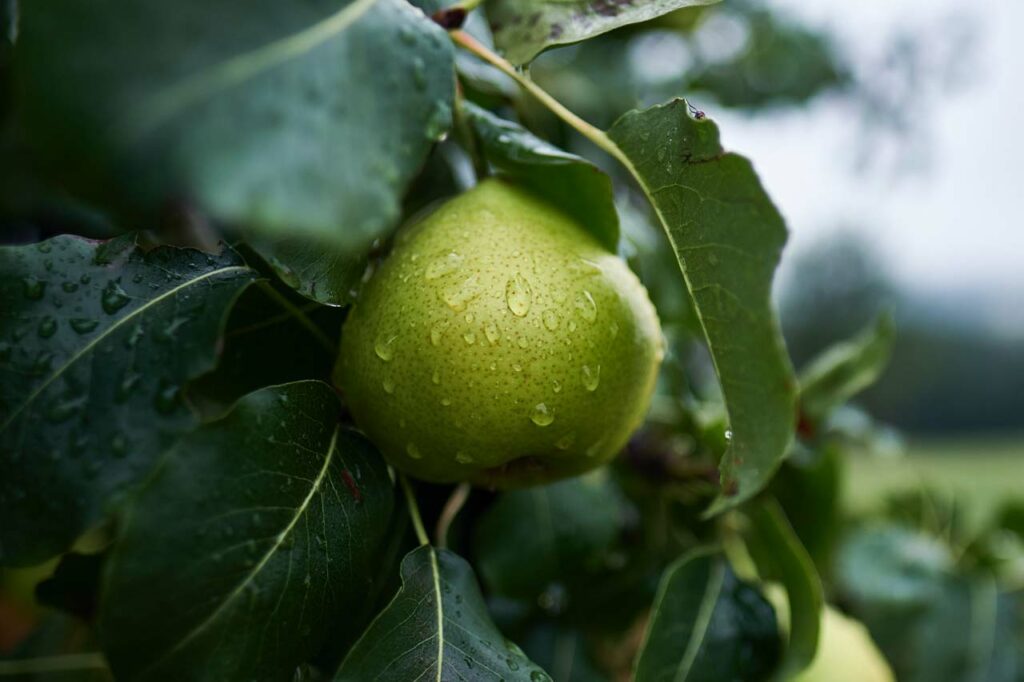Pears

Information sheet
Name: Pyrus communis
Origin: Europe
Place of production: Provence-Alpes Côte-d’Azur, Rhône-Alpes, Hauts-de-France, Centre – Val-de-Loire, Occitanie
Seasonality: August to May
History
Originally from central Asia, pears crossed the entire continent to be consumed in Europe by the Romans and Greeks. They grow in mild climates and can be eaten raw, cooked or dried. Traditionally, there are two types of pears coming from two very different areas of the world: European pears with soft flesh and Asian pears with crunchier flesh.
In France, pears became a popular garden fruit from the 16th century under King Louis XIV. The gardener La Quintine grew several varieties of pears in the King’s orchard, as he was very fond of them. From then on, sovereigns traditionally crowned at Notre-Dame-De-Reims were gifted pears and a glass of Champagne, because the mayor used to say: “We give you our very best: our wine, our pears and our hearts”.
However, in France, we currently only produce about ten of the existing varieties of pears, of which the Conference pear – named as such because it won first prize at the national British pear conference in 1885.
Seasonality
| J | F | M | A | M | J | J | A | S | O | N | D |
|---|---|---|---|---|---|---|---|---|---|---|---|

Storage tips
They can be stored in a cool, dark place (between 6 and 10°C), which is both dry and well-ventilated.
We do not recommend storing your pears too close together. They are best stored well spread-out in a crate or laid out on newspaper.

Tasting suggestion
Air drying best preserves the pear’s nutrients. Simply choose somewhere sunny and well-ventilated.
To do so, wash, dry and slice your pears not too thinly. Spread them out on a clean cloth, some paper or a baking tray. Leave them somewhere sunny. At night, bring them inside and cover them with gauze. Turn the slices over once a day so they dry equally on both sides. After 3 days, leave the fruit to dry somewhere shaded.
The slices can also be strung up and hung to dry.

Choosing your pears wisely
- Pears are ripe if them come off the tree easily when rotating them 90°
- Their skin must be smooth and tight
- Perfectly ripe pears should have fairly soft flesh around the stalk, which must be still attached
- Pears will finish ripening after they have been picked


